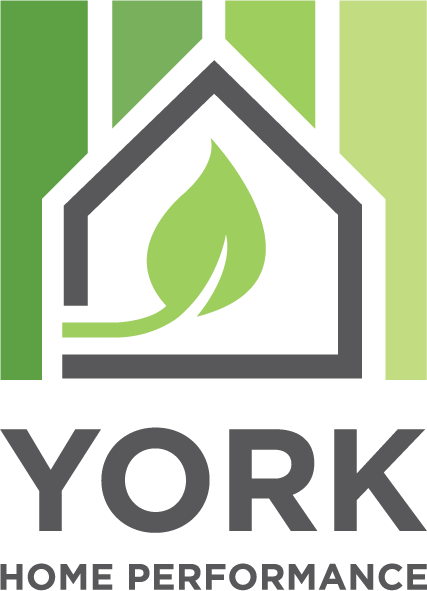
Many homes in the North Central MD and Southern PA areas have under-insulated exterior walls — often with only as little as a single inch of insulation! Improving and updating your home’s exterior wall insulation with York Home Performance will greatly improve your home’s comfort and save energy dollars!
How Much Insulation Do My Walls Need?
Up until recently, understanding where your wall insulation might be underperforming was difficult. But the high-tech infrared imaging system our energy auditors use can “see” through your walls while a blower door test is operating. Once the powerful fan in the blower door lowers the air pressure inside your home, the infrared camera can show where outside air is seeping in and where wall insulation is missing or ineffective. When we’ve mapped out the areas in your walls that need fortifying, we’ll be able to upgrade your wall insulation.
How Is Wall Insulation Installed?
Over the years, we’ve perfected our stud wall insulation installation techniques to provide the maximum R-factor, or thermal resistance, with minimal disruption. With most homes in Maryland and Southern PA, the walls are constructed with 2x4 stud framing on a 16-inch on center design. That vertical 16-inch pocket is where we will blow in the dense pack insulation until each space is insulated. We’ll then use our thermal imaging camera to double check the insulation coverage.
Inside or Out?
Our preference as insulation contractors is to have exterior access to install your wall insulation. However, some home exteriors cannot be easily accessed — including brick, stone and some stucco applications. In these cases, we can install insulation from the interior through the wall boards using the same careful technique. If you’re considering replacing your home’s exterior siding, then it’s also an excellent time to upgrade your wall insulation!
How is the Insulation Installed?
We will identify stud locations, and in each wall space we will cut a small circle on the exterior surface. This disc is reserved for replacement and sealing once the insulation is completed. Then the insulation technician will attach a flexible hose through this access point to blow in the shredded insulation. Once the cavity is filled to capacity, the technician will move to the next access port and repeat the process until all the exterior walls are insulated. Then the access ports will be resealed using the reserved wall material.
